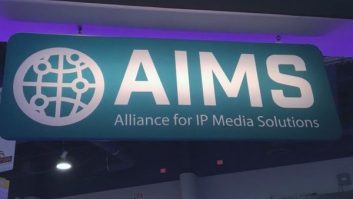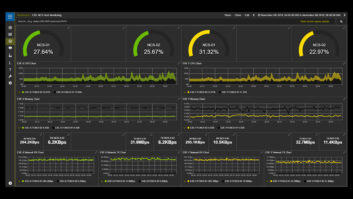2022 was a pivotal year for the industry in terms of IP adoption across both broadcast and Pro AV. Facilities deployed and managed IP media workflows with greater confidence and ease, with better support than ever from the open-standards ecosystem. Working through various projects and initiatives to support those advances, AIMS has its share of successes in the past year too. Through this ongoing work, the alliance has not only facilitated broader implementation of SMPTE ST 2110 media workflows but also fostered a significant increase in interest in the IPMX set of open standards and specifications for AV-over-IP deployments.
While 2022 was punctuated by several key achievements, one of the most notable for the alliance was the launch of our Educational Working Group (EWG). When our board gathered in 2021 to discuss goals for the upcoming year, we identified one industry challenge as being paramount: The urgent need for qualified professionals to design, build, and operate SMPTE ST 2110 systems as they expand beyond live production to studio workflows and the Pro AV industry. To address this challenge, we founded the EWG — and it was no small undertaking.
We defined the different kinds of users — technicians, maintenance staff, implementers, software developers, and others — who interact with a SMPTE ST 2110 system at any stage from design to operation, and then created a custom curriculum suited to each of them. In doing so, we organised a vast amount of information from resources such as technical sessions, pandemic webinars, training events, and material developed by our member companies. We also collaborated closely with SMPTE on the curriculum to ensure the delivery of a clear, consistent message. The result is a solid starting point for anyone new to the SMPTE ST 2110 community. We have received a great deal of positive feedback, as well as numerous requests to expand the curriculum beyond introductory material into more advanced subjects. Further development of this educational resource is something we’ll certainly be exploring in 2023 and beyond.
Beyond the launch of the EWG, 2022 was also a big year for IPMX, our proposed set of open standards and specifications for the carriage of compressed and uncompressed video, audio, and data over IP networks. We created IPMX in 2020 to address the interoperability challenges in the Pro AV ecosystem, which was dominated by a few proprietary standards from the industry’s top players. We spent 2021 defining the core requirements of IPMX, held an interoperability demo at InfoComm 2022, and began to see market adoption by the close of 2022. We built IPMX through collaboration with leading companies to ensure it serves the needs of manufacturers, integrators, and end users, and now these public interoperability demonstrations are boosting awareness and interest in the open standard for AV over IP.
The InfoComm 2022 demonstration truly highlighted IPMX as a critical enabler for the Pro AV environment, allowing the sharing of content between different network profiles, brands, and hardware and software nodes. A working demo of an open and standards-based system where equipment from a dozen or more companies interoperate in a single environment rightly attracts some attention, and we’ll continue to provide demonstrations such as this throughout 2023, including at ISE. In Barcelona, visitors to AIMS’ booth 5J550 will see HDCP running on IPMX, IPMX bridging to HDBaseT, and the capabilities and benefits of AMWA NMOS IS-04 and IS-05 for discovery, registration, and connection management.
And while IPMX is still new to the market, things are moving in the direction of broader adoption. If you compare the adoption curve of IPMX in the Pro AV market to that of SMPTE ST 2110 in the broadcast industry, IPMX is at the same stage SMPTE ST 2110 was in 2017 and 2018. The standards are complete, interoperability has been introduced, a few early projects have been launched, and the industry is starting to regard it as a serious solution.
SMPTE ST 2110 exploded in 2020 and over subsequent years became the core of many new IP infrastructure projects. IPMX is heading in the same direction, and 2023 is going to be the year where we see more projects adopting the standard as their foundation. You’re going to see some bigger rollouts and higher profile installations, and then it will really take off in late 2023 and early 2024. So, stay tuned — it’s going to be an exciting year.







